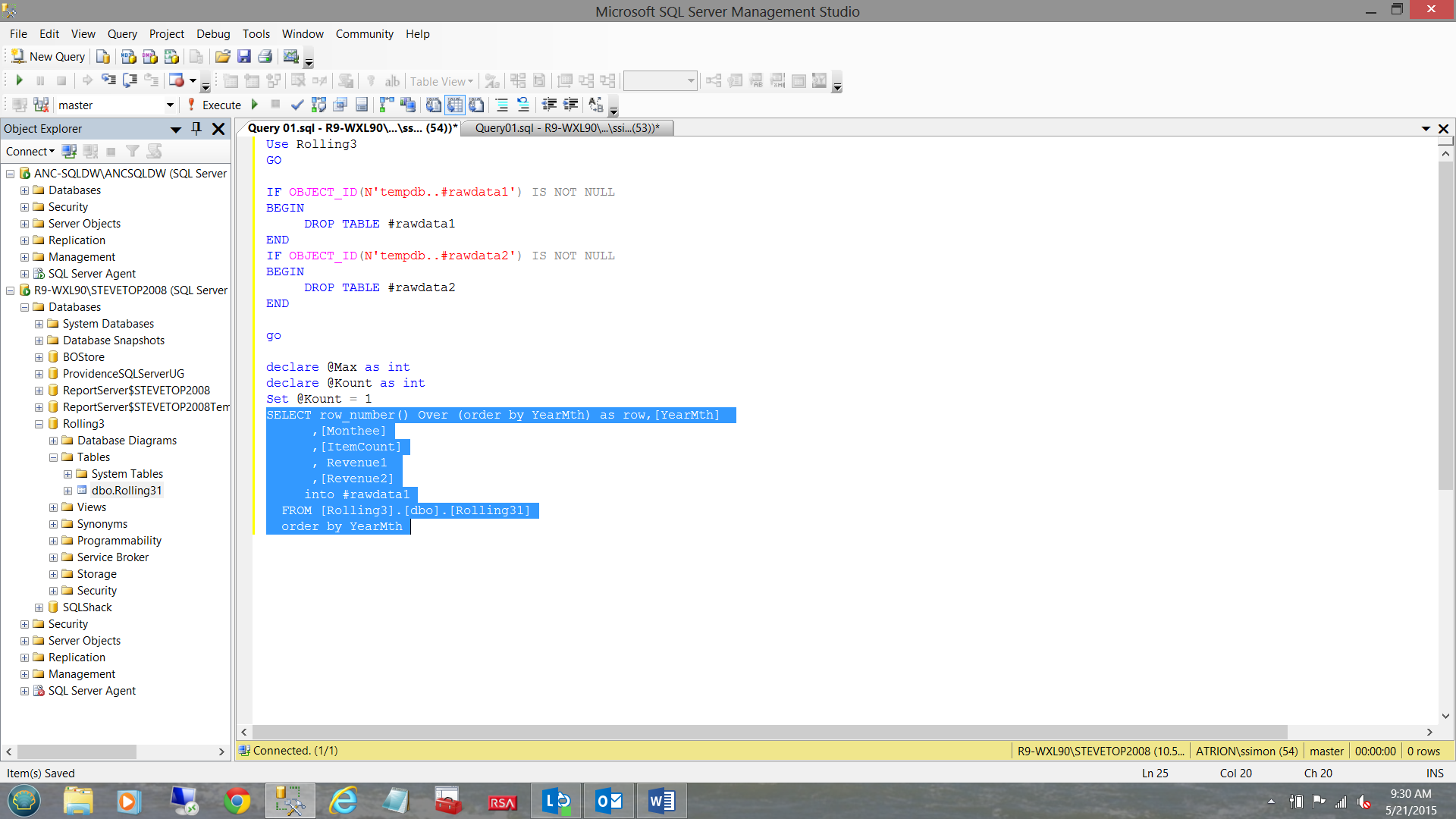While Loop In Function Sql Server
Previous: SQL Server IF Conditions. Looping structures allow a single command, or a group of statements, to be executed repeatedly. When using the T-SQL WHILE loop, a Boolean condition is checked every time the code within the loop is about to start. If the condition is true, the loop is executed.
In this chapter, we will discuss Loops in PL/SQL. There may be a situation when you need to execute a block of code several number of times. In general, statements are executed sequentially: The first statement in a function is executed first, followed by the second, and so on.
Programming languages provide various control structures that allow for more complicated execution paths.
A loop statement allows us to execute a statement or group of statements multiple times and following is the general form of a loop statement in most of the programming languages −
PL/SQL provides the following types of loop to handle the looping requirements. Click the following links to check their detail.
| S.No | Loop Type & Description |
|---|---|
| 1 | PL/SQL Basic LOOP In this loop structure, sequence of statements is enclosed between the LOOP and the END LOOP statements. At each iteration, the sequence of statements is executed and then control resumes at the top of the loop. |
| 2 | PL/SQL WHILE LOOP Repeats a statement or group of statements while a given condition is true. It tests the condition before executing the loop body. |
| 3 | PL/SQL FOR LOOP Execute a sequence of statements multiple times and abbreviates the code that manages the loop variable. |
| 4 | Nested loops in PL/SQL You can use one or more loop inside any another basic loop, while, or for loop. |
Labeling a PL/SQL Loop
PL/SQL loops can be labeled. The label should be enclosed by double angle brackets (<< and >>) and appear at the beginning of the LOOP statement. The label name can also appear at the end of the LOOP statement. You may use the label in the EXIT statement to exit from the loop.
The following program illustrates the concept −
When the above code is executed at the SQL prompt, it produces the following result −
The Loop Control Statements
Loop control statements change execution from its normal sequence. When execution leaves a scope, all automatic objects that were created in that scope are destroyed.
PL/SQL supports the following control statements. Labeling loops also help in taking the control outside a loop. Click the following links to check their details.
While Loop In Sql Server 2008 Function
| S.No | Control Statement & Description |
|---|---|
| 1 | EXIT statement The Exit statement completes the loop and control passes to the statement immediately after the END LOOP. |
| 2 | CONTINUE statement Causes the loop to skip the remainder of its body and immediately retest its condition prior to reiterating. |
| 3 | GOTO statement Transfers control to the labeled statement. Though it is not advised to use the GOTO statement in your program. |
I am trying to execute this code below. It is a simplified example of the actual code I have to make, so I know that it is useless to loop in such a way. However, I need to look and union select statements in SQL Server. When I try to run this query I get an error:
Incorrect syntax near the keyword 'END'.

Any ideas?
marc_sclosed as too localized by LittleBobbyTables, marc_s, Martin Smith, Stuart Ainsworth, Ash BurlaczenkoOct 13 '12 at 21:23
This question is unlikely to help any future visitors; it is only relevant to a small geographic area, a specific moment in time, or an extraordinarily narrow situation that is not generally applicable to the worldwide audience of the internet. For help making this question more broadly applicable, visit the help center. If this question can be reworded to fit the rules in the help center, please edit the question.
4 Answers
You need a second set to UNION on. The while loop doesn't hold on to the selected set and know it the next time through. What you're trying to accomplish is basically select all the data from mytable then union it again on the same set...n times. Which really doesn't make sense. Remember that SQL is set based, so select * From mytable will select every record in there. You also never state what you're trying to accomplish.
Samir BanjanovicSamir Banjanovic
That query makes no sense. To use UNION, you need to be selecting from a second table.
SQL Server essentially sees:
With no second table after the UNION.
Instead of trying to use UNION I would use a temp table or temp table variable to merge the result sets
Sql While Loop Counter
msmucker0527msmucker0527While Loop In Function Sql Server Free
This way gets rid of the the UNION statement and avoids a loop altogether: